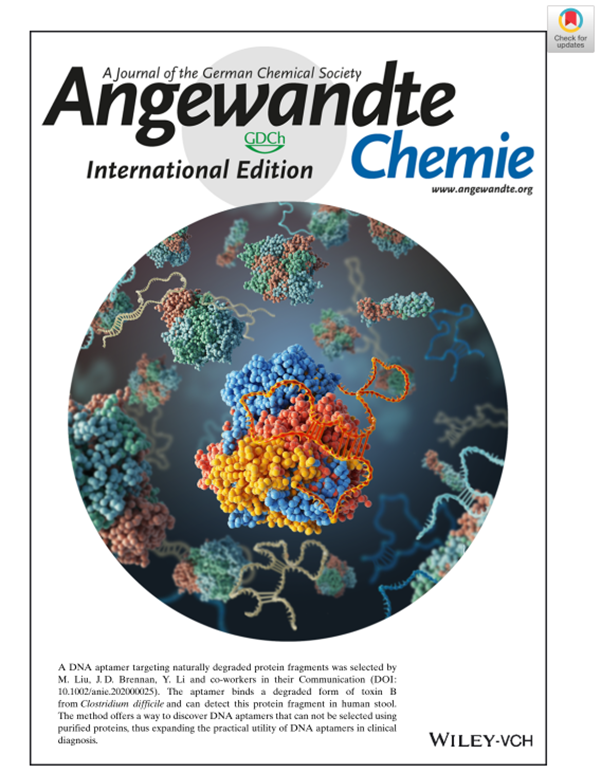
Source:School of Environmental Science and Technology
By Li Xiang, Liu Meng
Protein biomarkers often exist as degradation fragments in biological samples, and affinity agents derived using a purified protein may not recognize them, limiting their value for clinical diagnosis. Recently, Prof. Liu Meng from School of Environmental Science and Technology and his research team present a method to overcome this issue, by selecting aptamers against a degraded form of the toxin B protein, which is a marker for diagnosing toxigenic Clostridium difficile infections. This in vitro selection (also known as SELEX) approach has led to isolation of a DNA aptamer that recognizes degraded toxin B, fresh toxin B, and toxin B in human stool samples. In addition, this aptamer showed high selectivity against toxin A and glutamate dehydrogenase. Further studies suggested that the molecular weight of the targeted toxin B degradation fragment was about 50 kDa.

Figure 1.SELEX strategy
Using this new aptamer, they produced a simple paper-based analytical device for colorimetric detection of toxin B in stool samples, and the NAP1 strain ofClostridium difficile. This device can achieve higher sensitivity in a shorter time compared with commercial detection kits. It was able to detect 104NAP1 strains in 30 minutes. The strategies demonstrated by this work can expand the practical utilities of DNA aptamers in clinical diagnosis.

Figure 2.Colorimetric detection of NAP1 strain usingpaper-based analytical device.

This work was collaborated with Prof. John D. Brennan and Prof. Li Yingfu from McMaster University, Canada.
Editor: Li Xiang